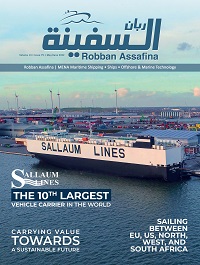EU awards ABS, Arcsilea study on the future of CII, EEXI and EEDI
A consortium between ABS and Arcsilea has won a tender from the European Commission, Directorate-General for Mobility and Transport (DG MOVE) to carry out a technical study on the Future of Ship Energy Efficiency Measures.
The 15-month-long project will analyze the IMO’s CII, EEXI and EEDI framework and provide recommendations for further development, effective implementation and enforcement.
The initiative is part of the Smart and Sustainable Mobility Strategy adopted by the European Commission, which calls for the European Union to establish sustainability standards with the IMO.
"Energy efficiency measures are cumulatively changing the shape of our industry before our eyes. We can see how they are driving change on fleets and operations as owners understand how to adapt their existing assets and new orders to perform in the new business environment they create" said Georgios Plevrakis, ABS Vice President, Global Sustainability.
The IMO’s MEPC 76 last summer left the shipping industry divided regarding the level of ambition for reducing shipping’s environmental footprint, but the adoption of EEXI and CII measures was the main tangible outcome for the future of shipping emissions.
Although the measures practically enter into force as late as 2023, shipowners are already in the process of getting their ships certified for EEXI and calculate CII at the same time, in order to be prepared.
What are the EEXI and CII?
IMO’s contradictory MEPC 76 meeting last June adopted the already-agreed amendments to MARPOL Annex VI, setting two new measures into effect at the start of 2023 – the energy efficiency index for existing ships (EEXI) and the carbon intensity indicator (CII), aiming to improve energy efficiency in line with the 2018 Initial IMO Strategy. This strategy aspires carbon intensity for international shipping to decline through a 40% reduction by 2030, and a 70% reduction by 2050 compared to 2008.
Source: Safety4sea
| Read Here | |
 |
|



































